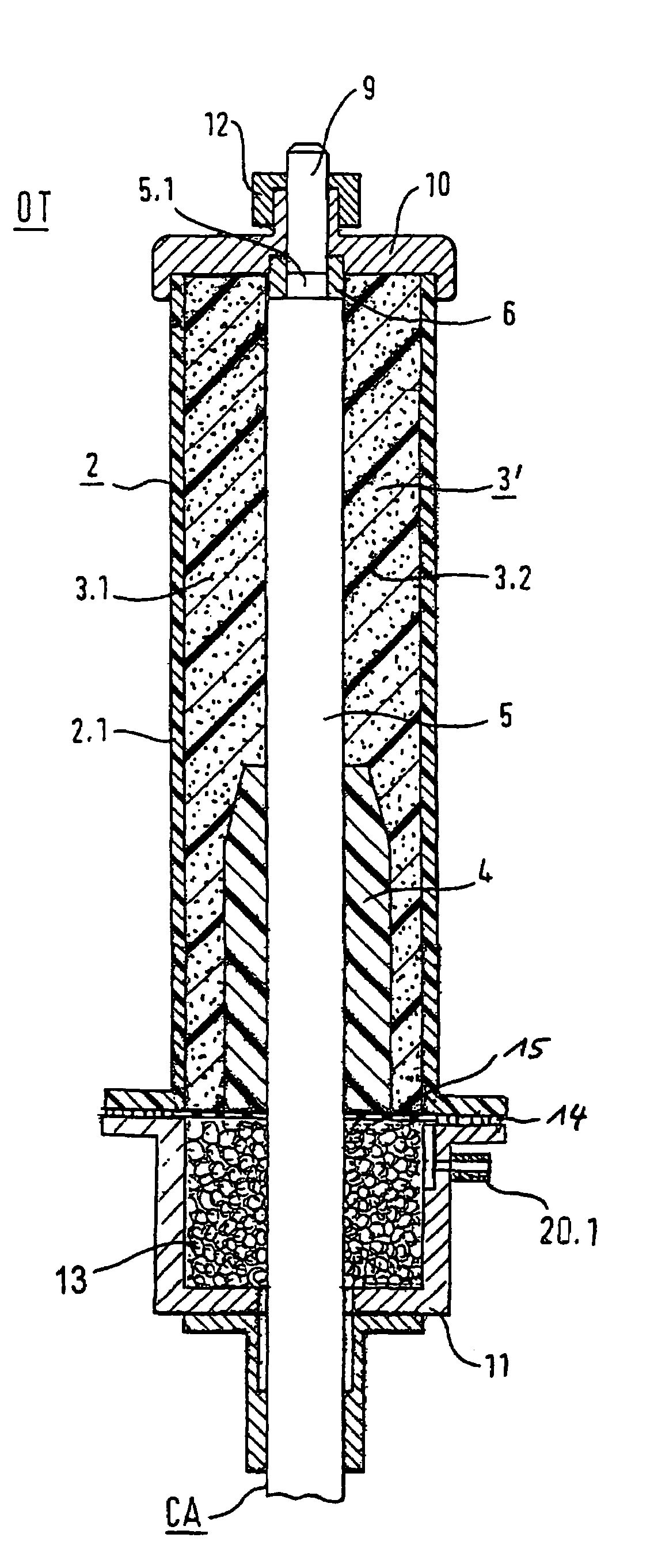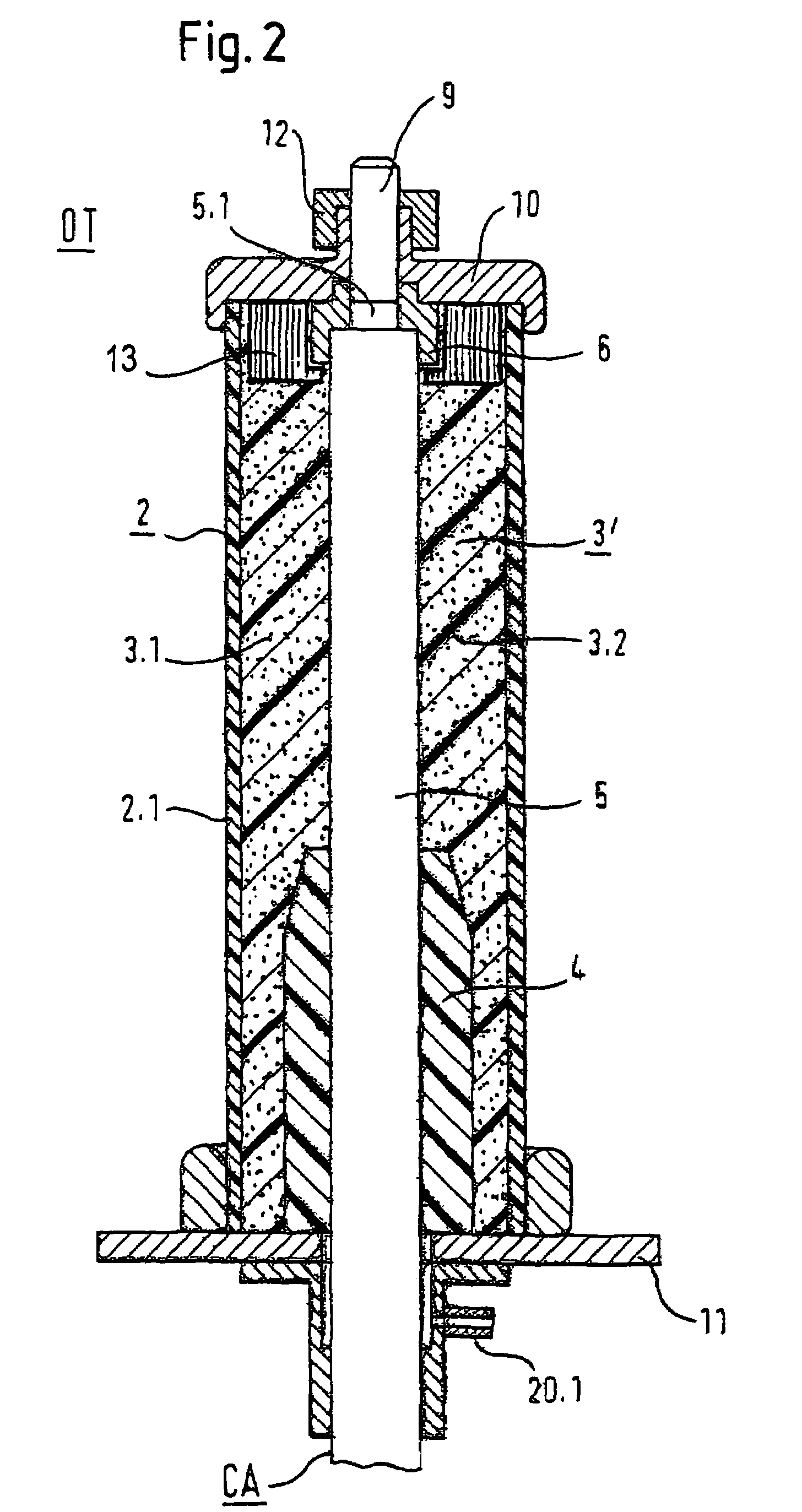Method and arrangement for a termination of an electrical cable
a technology of electrical cables and terminations, which is applied in the direction of electrically conductive connections, basic electric elements, electrical apparatus, etc., can solve the problems of time-consuming, incorrect filling of the insulator body, and complicated to ensure the maintenance of free space, so as to achieve more economical and safer solutions.
- Summary
- Abstract
- Description
- Claims
- Application Information
AI Technical Summary
Benefits of technology
Problems solved by technology
Method used
Image
Examples
fourth embodiment
OF A TERMINATION
[0118]FIG. 8 shows a forth embodiment of a termination according to the present invention.
[0119]In particular FIG. 8 shows a volume change compensation member 13 on top of a termination provided with a conical insulator body 2. Said volume change compensation member is in the form of an inflatable body, shown already inflated in FIG. 8
[0120]According to FIG. 8, the volume change compensation member 13 is shown positioned at the top of the termination, while the insulator body 2 is already filled with the insulating material 3 and the upper plate 10 is installed.
[0121]The height of the inflatable body is chosen to occupy the necessary volume at the atmospheric pressure. The pressure within the inflated body, generated for example by a suitable pump is for example of about 0,5 bar and the body increases its volume.
[0122]In this particular embodiment the material of the inflatable body is a semi-conductive rubber and the inflatable body improves the electrical strength ...
first embodiment
OF A METHOD TO BUILD A TERMINATION
[0124]FIG. 9 shows a first embodiment of the method of building a termination of an electrical cable in accordance with the invention.
[0125]Particularly FIG. 9 shows a first embodiment of the method of building a first embodiment of the termination as described above with reference to FIG. 2. However, this first embodiment of the method of building a termination is also applicable to the modification of the second embodiment of a termination as described above with reference to FIG. 3, in which the volume change compensation member 13 in the form of a foam body is taken out from the termination when the step of filling the insulating compound is completed.
[0126]The procedure starts at step S1, in which an insulator body 2, with the parts as shown in FIG. 1 and FIG. 2 necessary for the electrical functioning of the outdoor termination, is prepared and a high voltage cable CA is provided inside said insulator body 2.
[0127]In a second step S2, solid pa...
second embodiment
OF A METHOD TO BUILD A TERMINATION
[0132]FIG. 10 shows a second embodiment of the method of building a termination of an electrical cable in accordance with the invention.
[0133]Particularly FIG. 10 shows a second embodiment of the method of building a termination as described with reference to FIG. 3 and 8. The particular features of said embodiments are that the volume change compensation member 13 is located in the upper area of the termination near the connector stalk and that the volume change compensation member 13 remains in the termination for normal use.
[0134]The procedure starts at step S11, which is identical to step S1 of the procedure shown in FIG. 9.
[0135]In a second step S21, solid particles 3.1 are filled into the insulator body 2 from the upper portion of the termination. For example a filling of about 90% of the interior of the insulator body 2 is carried out and a predetermined space is left free at the upper portion of the insulator body 2. In case the insulating m...
PUM
 Login to View More
Login to View More Abstract
Description
Claims
Application Information
 Login to View More
Login to View More - R&D
- Intellectual Property
- Life Sciences
- Materials
- Tech Scout
- Unparalleled Data Quality
- Higher Quality Content
- 60% Fewer Hallucinations
Browse by: Latest US Patents, China's latest patents, Technical Efficacy Thesaurus, Application Domain, Technology Topic, Popular Technical Reports.
© 2025 PatSnap. All rights reserved.Legal|Privacy policy|Modern Slavery Act Transparency Statement|Sitemap|About US| Contact US: help@patsnap.com



